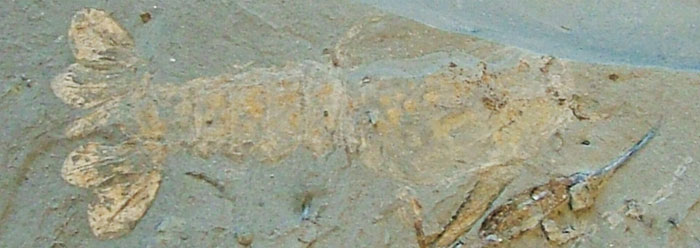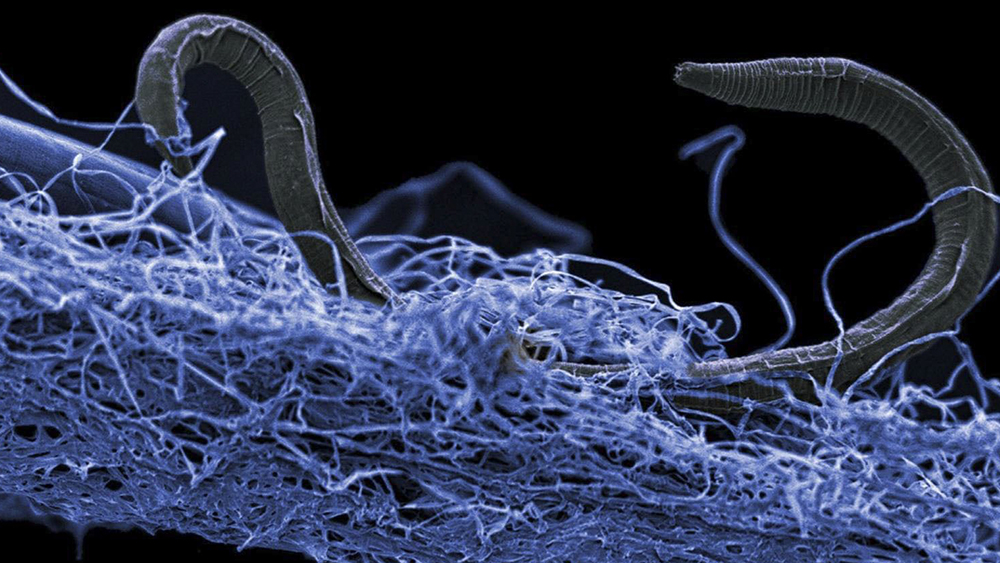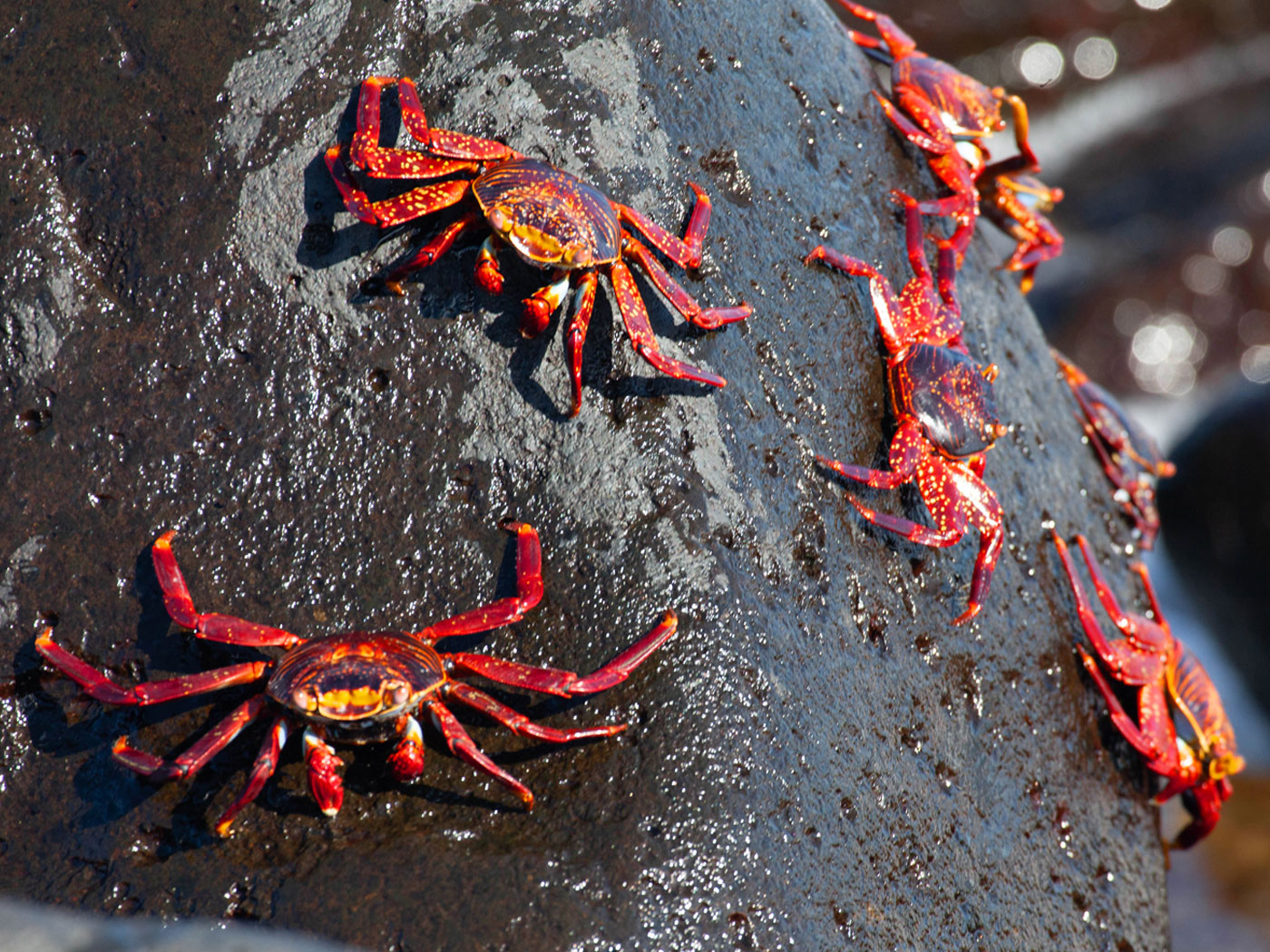A "stunning" fossil was discovered by 15-year-old James Dickinson while he was fossil hunting at a beach in southern England. The area where he found it, Lyme Regis, is well known as a "treasure trove" for fossils. But the tiny lobster James discovered contained a very rare feature--parts of its original shell.
His family brought the unique find to Phil Davidson, a geological warden at the Charmouth Heritage Coast Centre, who sought the expertise of the Natural History Museum in London. There, Dr. Joe Collins recognized it as Coleia brodei, an extinct variety of lobster. Davidson then wrote to the Dickinsons:
Your specimen is unusual and it has been preserved in a strange way. The few lobsters found here in Dorset are usually preserved in hard limestone where their remains have been partially replaced by phosphate. Your specimen was preserved in soft shale, which has preserved portions of the original shell and has been partially crushed.1
Along with beetles, butterflies, and shrimp, lobsters are covered with a hard, crusty biomaterial called "chitin." Chitin is secreted by special tissue and then quickly hardens around the animal's body, thus restricting its size. To grow, the creature must shed its chitinous exoskeleton and remake a larger one.
Chitin is more biodegradable than many man-made polymers. That means that its constituent elements can be efficiently recycled back into the environment. This is why the ocean and forest floors are not littered with generations of arthropod remains. But this also means that chitin breaks down spontaneously.
A 2009 technical report in the journal Geology reviewed a strange fossilized fungus in which the fossil was actually a form of chitin that makes up fungal cell walls. The authors wrote, "Because of the lability of chitin, chitinous structures are normally considered to have a relatively low preservation potential."2 In other words, chitin has a short shelf life.
Because chitin should not survive over long periods of time, it came as a complete surprise when experts examined James' well-preserved tiny lobster and found bits of its original shell still intact. The surprise was magnified by the fact that the shale in which it was discovered was a "soft rock."3 This means that over time, the deleterious effects of water seepage and bacterial action could only accelerate the break-down of this crustacean's exoskeleton.
So, the insistence that this fossil is "millions of years old"1 does not match the evidence. How could its shell still be around after all that time, considering how biodegradable it is and knowing that it was encased in such porous rock?
It makes much more sense that the chitin persisted for only thousands of years--a date that is consistent with the biblical record--rather than the man-made assignment of millions. The most likely conclusion is that this fossil is a tiny reminder of the uniquely catastrophic worldwide Flood of Noah.
References
- Haworth teenager discovers rare fossil. Keighley News. Posted on keighleynews.co.uk September 26, 2010, accessed September 27, 2010.
- Sephton, M. A. et al. 2009. Chemical constitution of a Permian-Triassic disaster species. Geology. 37 (10): 875.
- Well preserved fossil lobster. ID service fossil donations. NaturePlus, a blog of the Natural History Museum of London. Posted on nhm.ac.uk September 20, 2010, accessed September 27, 2010.
Image Credit: © 2010 The Natural History Museum. Adapted for use in accordance with federal copyright (fair use doctrine) law. Usage by ICR does not imply endorsement of copyright holders.
* Mr. Thomas is Science Writer at the Institute for Creation Research.
Article posted on September 30, 2010.
























